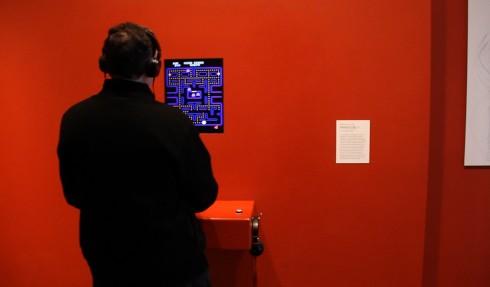The Museum of Modern Art embraces all aspects of digital culture and design
The video game collection at MoMA.
For Paola Antonelli, senior design curator at the Museum of Modern Art (MoMA), interaction and behavior are the true cutting edge of design.
“The Museum of Modern Art is concerned with the ‘art of our time’ — that was how the original founding director spoke about it,” Antonelli says. “The ‘art of our time’ is also concerned with the technology of our time.”
In particular, video games and interaction design have become such an important part of our lives, “we cannot possibly not consider it among [both] design and art,” she says.
Interaction design underlies every encounter we have with machines that depend on digital technology, especially every time we encounter a screen, Antonelli says. “Sometimes we encounter it and we're mad at it — say, the ATM machine; or it’s an object that I love, which is the MetroCard machine — the interface is so beautiful: that’s an interaction design object.”
But what makes interactive design so interesting is behavior, Antonelli says. “Interaction designers design a behavior and help people interact with the machine.” In a violent video game, like Street Fighter II, for example, the way you play it is one form of interaction design: the player must be aggressive in a certain way to win the game. But in a different game, like Tetris, the player must be attentive in a very different way and to different things. “Behavior is the key,” she insists.
MOMA currently has an exhibition in which viewers can actually play old video games. To select the best games for the exhibit, the musuem “gathered a group of experts and advisors, because that's how we do it, and we tried to set up some criteria,” Antonelli explains. “It's an art museum, so form is important, and aesthetic intention as a form of communication. Since games are dynamic, we have to think of space and time. The way they move into space.”
Antonelli is particularly pleased that people can play Pong and a simulation of the original Tetris that was created by its original designer, Alexey Pajitnov. And, of course, no exhibit of old video games would be complete without PacMan. Pac Man is amazing, Antonelli says, not only because it's part of everybody's life. It’s also because its design makes a two dimensional maze into an experience that’s “never two dimensional to the player. It always feels like three, four, five dimensions. You really feel that you are in space and you're running for your life.”
When MoMA acquires a video game for its collection, they are interested in the console and the interface, but the ‘holy grail’ is the code itself. “It's very hard to get the code, because the code is like the formula for Coca Cola. Nobody wants to give it to you, because it's the proprietary secret of the company.” Sometimes the museum can get it from designers, but it's harder to get it from companies.
“When we cannot acquire the code, we acquire simulations, emulations, the cartridge, the hardware. But what we're interested in showing is the interaction by itself,” Antonelli says.
We interact with design in technology all the time whether we realize it or not, Antonelli says: technology is part of every physical object we deal with.
“The digital revolution has changed what it means to be a human being. … It has given us connectivity of course, it has given us access and the ability to understand how other people live in different parts of the world. So I would say that designers right now have a much wider fan of possibilities in terms of different cultural elements they can use, and also they have many more fields, because they also have the digital fields, not only the physical ones.”
This story is based on an interview that aired on PRI’s Science Friday with Ira Flatow. You can also see Paola Antonelli’s full tour of MOMA's video game arcade at the Science Friday website.
